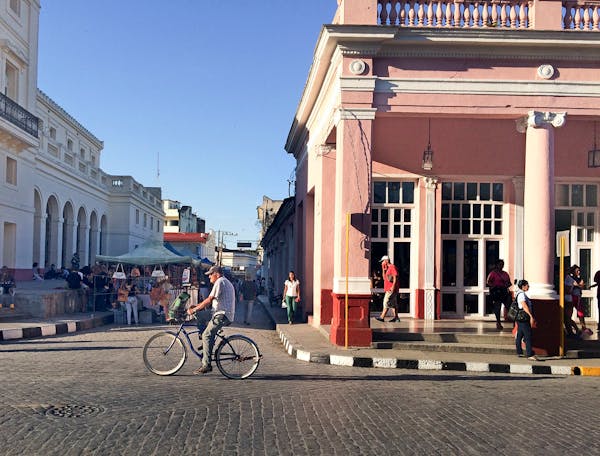During a solo people-to-people tour of Cuba, I learned some important things through trial and error. Here are some important tips I wish I'd known before I went:
• Bring more cash than you think you need; prices across the country wildly vary and many taxi drivers, store clerks and restaurateurs will simply name a price based on how rich you look. Modest haggling is acceptable. Meanwhile, though the U.S. government now condones their use, U.S. credit and debit cards are still not accepted at most establishments and ATMs in the country, and U.S. citizens cannot receive wired funds via Western Union. It is also worth noting that the Cuban government charges a 10 percent fee to convert U.S. dollars to Cuban currency; some places charge a fee in excess of that.
• Avoid people in uniforms, especially when you're dealing with money issues. Regular citizens are mostly very helpful with directions and other questions. Ask regular Cubans about where to exchange money in the airport; avoid the tourist information desk. I was sent from that desk to a small room, where an official exchanged my money and charged 3 percent, on top of the 10 percent fee for converting dollars.
• Consider getting some CUPs (Cuban pesos) along with your CUCs (Cuban convertible pesos, a currency that is a 1:1 equivalent of the U.S. dollar and the one tourists typically receive). Many traditional Cuban restaurants list prices only in CUP. Other restaurants will note two prices and hope tourists don't do the confusing calculation to realize they're paying perhaps three to five times more in CUCs than they would in CUPs. If you're unable to get CUPs at the currency transfer, it will be possible to do so at a bank.
• Make friends with the locals. Besides benefiting from a population that is highly cultured and educated, your new friends will help you get around and negotiate prices. If you happen to run out of money, as I did, you'll need them: Although U.S. citizens cannot receive wired funds, Americans can send money to a Cuban. So you'll need to find a Cuban friend who can pick up the funds for you. To be polite, give them a generous tip for the trouble.
• Take gypsy cabs when possible. They are typically as safe as marked taxis, and will ask for drastically lower fares. At the airports, you can find a line of these unmarked cars out front.
• In general, hole-in-the-wall restaurants serve the best, cheapest and most authentic Cuban food. Many of these do not have signs. Many do not have alcohol. In Cuba, eating and drinking is often separated — you eat first, then drink later. The restaurants that have English menus and cater to tourists will be priced accordingly.
• Be wary of fresh produce. If it doesn't look good, don't eat it. Vegetables are a common cause of food poisoning. Consider visiting your doctor before departure and requesting some antibiotics to bring with you.
• Bring printed maps if possible. Google and Apple have not yet digitally mapped the country.
• Exercise your Spanish as much as possible. Doing so will allow you to communicate better, receive better prices and be harassed less.
• Skip Varadero. The oceanside city 40 minutes from Havana is reputed to be one of Cuba's sparkling gems, but in my experience, the resort destination lacked authentic charm. It had white beaches, but the predominant languages were English and French and it seemed like a Disney-esque version of Cuba.
• Bring back rum and cigars. Last year, the U.S. lifted the previous $100 limit on the value of these items Americans could bring into the country. The goods are now subject to the same duties as alcohol and tobacco from other countries.
